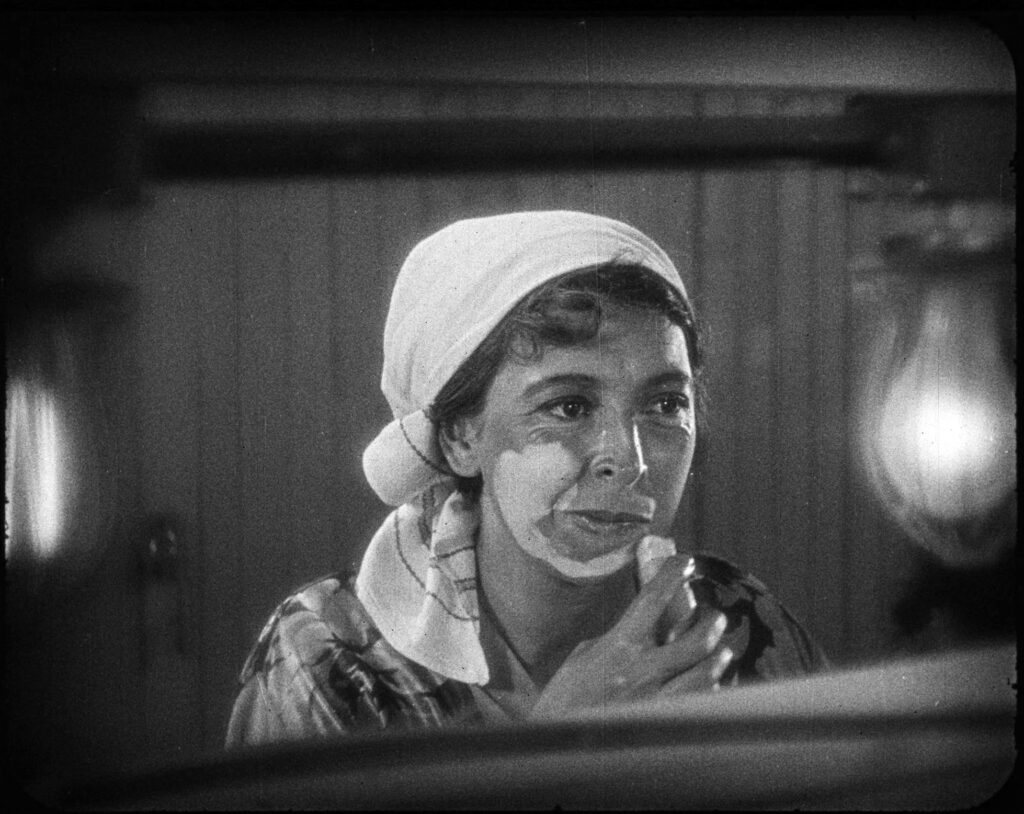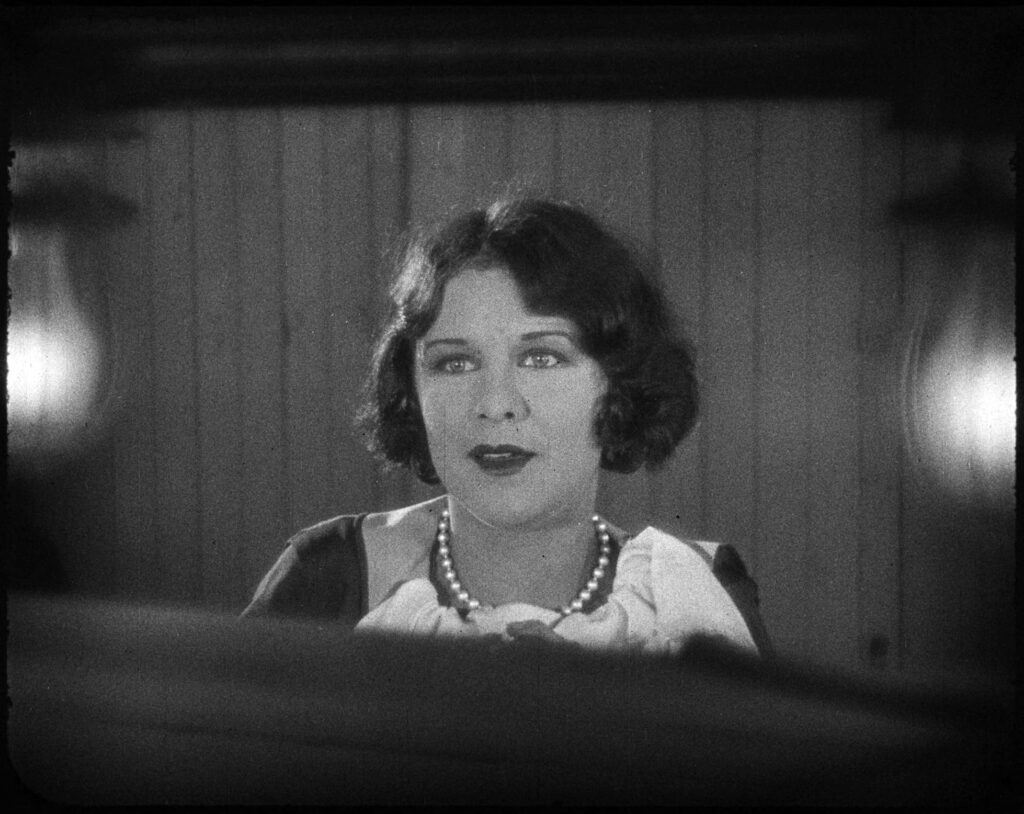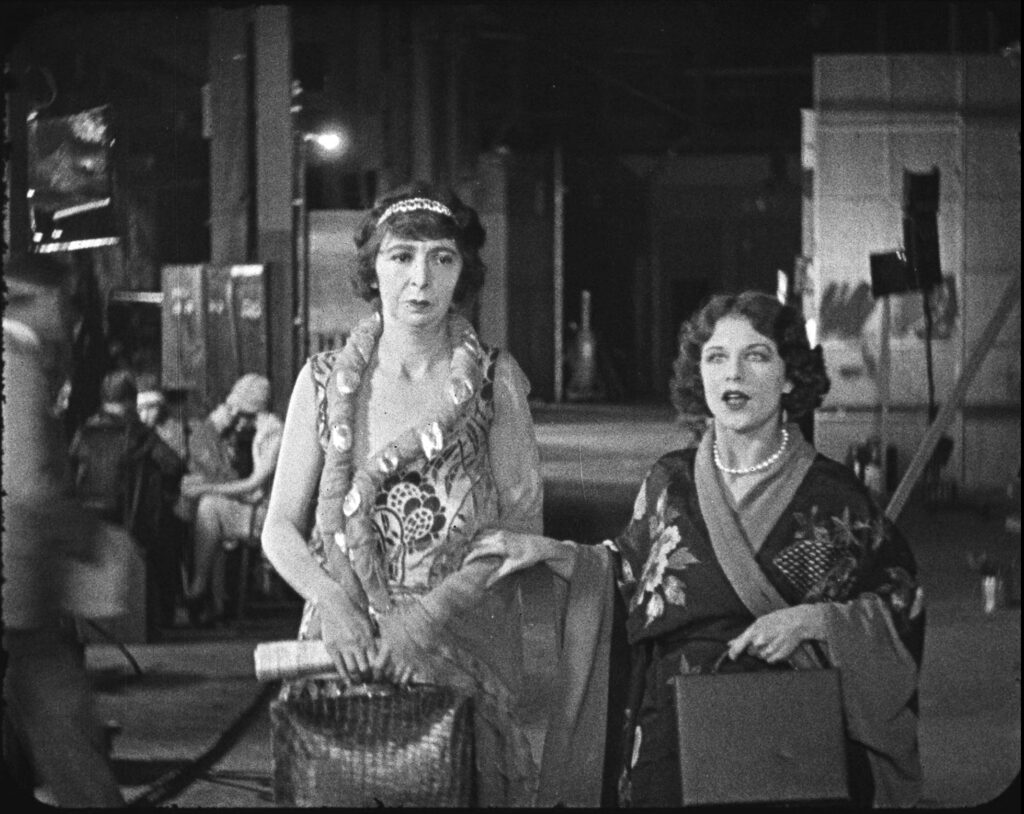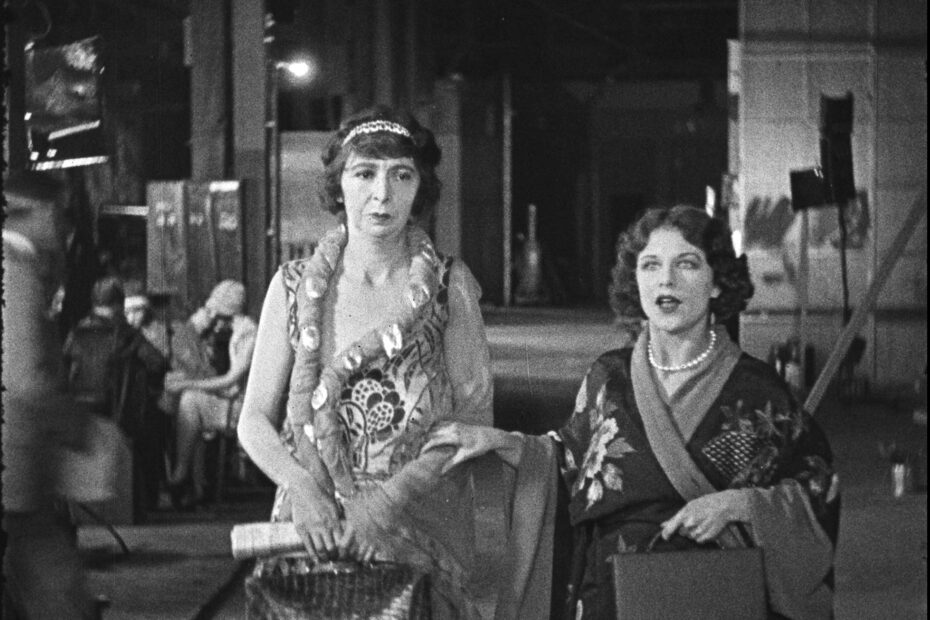Putting on a Good Face…For Silent Film
The use of pancake white makeup on the faces of actors in films was common in the silent era. Sometimes it’s less noticeable than others, and in some cases it makes actor’s faces look like they were made of porcelain. There’s a reason for this use, due to the chemical properties of motion picture film in use at the time. This would change in the late 1920s when the use of orthochromatic film gave way to the use of panchromatic film.
I took a filmmaking workshop at the George Eastman Museum in 2017, was literally a film making workshop where we actually made motion picture film, using chemical technologies and machinery from the early 20th century. Our instructor, Mark Osterman explained that the earliest motion picture stocks were (or are) referred to as orthochromatic film and were only sensitive to blue and green. This meant that anything in the range of reds or oranges would read as gray or very dark grey. Caucasian skin appears darker than it might in real life—freckles and mouths even more so.
You may have noticed in watching silent films that when an actor holds their hand up to their face. their hand appears to be much darker than their face does. When Stan Laurel, Harry Langdon and other comedians stand in profile, if you look for it, you can see the line on the side of their necks where the makeup stops.
This vintage article demonstrating the basics of orthochromatic film’s properties may help explain and demonstrate, and this article by Jesse Pierce delves into this in more detail.
Several years ago I discovered a demonstration of this use of pancake white makeup on actors’ faces in an obscure 1927 film called Stranded starring Shirley Mason. I was at the Library of Congress’s Packard Preservation Campus to play for a couple of shows, and Steve Massa had come along—we’d asked to look at silent films in the LoC’s archive starring silent film comedian Gale Henry. We’re big fans of Gale and understandably wanted to see anything we could that she’s in.
Along with comedy shorts Gale stars in like Pants (1919) and Her First Flame (1920) and surviving episodes of the serial spoof The Lady Baffles and Detective Duck (1915), we’d asked to look at Stranded. In to the film’s storyline, Shirley Mason’s character comes to Hollywood to take a job at a (fictional) film studio. On her first day on set, she meets Gale at a long row of makeup tables where fellow actresses are putting their silent movie faces on. Gale Henry is seen without pancake white makeup at a makeup mirror, applying the stuff to her face.

I almost fell out of my chair when this scene came on, as I don’t think I’d ever seen such a thing in a silent film. It’s made very clear what is happening and as you can see from the frame grab above Gale’s hand is the same shade as her face. Gale and Shirley meet across the long row of makeup tables with lighted mirrors. Discovering this is Shirley’s first day at the studio and sensing she may not know about screen makeup, Gale offers her a tin of the white makeup, and explains its application through gesture.
Of course, when we cut to Shirley, we can see she’s clearly already got pancake white on her face. Not a continuity error…this is how Mason has appeared throughout the film.

There are cuts back and forth between the two while they chat, during which Gale continues to apply the makeup. And then, just as Shirley is about to begin applying the makeup, we fade out. The next shot we fade in on is a tracking shot of Gale and Shirley walking through the studio, and both of them are fully made up.

What’s interesting to note is that at no point is the reason for the makeup explained by Gale to Shirley, for her benefit or for ours. It appears to be something that audiences understood, or was assumed they would.
Stranded survives in a 35mm nitrate original print at the Library of Congress, along with a safety preservation negative. The film is not currently available on Blu-ray or DVD, although in 2023 Edward Lorusso ran a Kickstarter to acquire a digital copy of a scan of the nitrate print, have it scored, and then send that to the backers. Ed very kindly shared the a file of one of the film’s reels with me, the one with the make-up table sequence. The frame grabs I’ve made for this post are taken from that scan, as is the video you see here, which I’ve graded.
